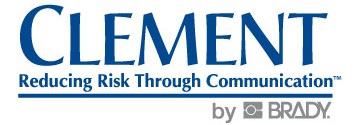Violence at Work: How Secure Is Your Company?
It is a threat that exists in large businesses and small, in every type of industry and in every area of the country. Workplace violence is one of today’s most-pressing safety concerns — and the statistics are staggering:
- Each week, an average of 20 workers are murdered and 18,000 are assaulted at work.
- Workplace violence is the No. 1 cause of death for women on the job.
- Nearly 2 million workers are victims of workplace violence in the U.S. each year.
Every safety program should incorporate strategies for mitigating the threat of violence in the workplace.
Below are some areas to consider when creating a plan to safeguard your business.
Workplace Violence Defined
Most people think of violence as a physical act that causes harm. However, workplace violence encompasses a much broader range of activities. For example:
- Threatening behavior, such as the throwing or willful breaking of objects
- Harassment, including behavior that demeans, humiliates, embarrasses or consistently and intentionally annoys or intimidates an employee
- Verbal threats or abuse, including expressions of harmful intent or swearing or condescension aimed at an employee
- Physical attacks, such as hitting, shoving and pushing
Action Items
In its report Workplace Violence: Issues in Response, the Federal Bureau of Investigation (FBI) outlines steps employers should take when addressing violence at work:
- Adopt a clear “no-threats, no-violence” policy and prevention plan.
- Communicate the policy and plan to all employees throughout the organization.
- Provide regular violence prevention training to all employees at all levels.
- Ensure all workspaces are physically secure.
- Adopt staffing policies that protect employees, such as pre-hire screening and mandatory background checks.
- Form relationships with local police, social service and mental health providers, and other agencies that can assist in threat assessment, threat management and crisis management.
- Periodically review and update the plan.
Craft Your Policy
A carefully worded policy forms the basis of an effective violence prevention plan. Your written document should clearly communicate the message that violent and disruptive acts in the workplace will not be tolerated.
In addition, the document should cover:
- Behaviors that are considered unacceptable
- The reporting process for incidents that occur on-site
- How the company will respond to reports of violence
- Disciplinary actions that may result in response to acts of violence
- The roles and responsibilities of management and employees in facilitating a safe work environment
- How and when the company’s emergency action plan comes into play
Training Items
Ongoing employee training is another important component of your overall violence prevention plan. The FBI highlights some important areas to cover:
- Risk factors that can contribute to violent behavior
- Recognition of warning signs and what to do about them
- How to respond in violent situations
- How to activate alarm systems
- Ways to protect oneself
- Procedures for reporting violent incidents
- Where to go for help, including how to obtain counseling after a violent episode
Addressing the Issue Is a Start
It may be impossible to completely protect your facility from the risk of workplace violence. However, taking action to address the issue in your organization is a step in the right direction.
For products related to workplace violence, visit: www.clement.com/index.php?q=active_shooter_poster and www.clement.com/index.php?q=node/5687

